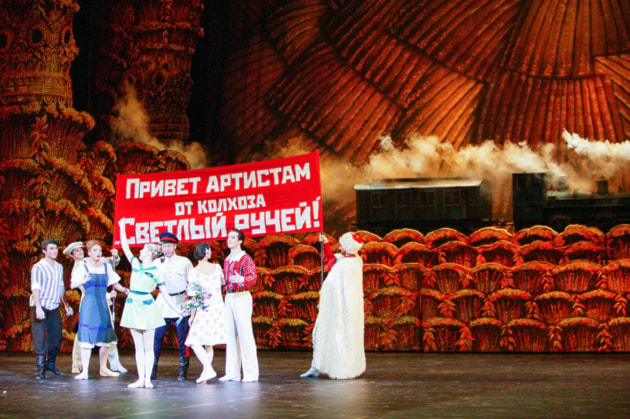There is no need to rush off to the wintry cold of Moscow to see the world famous Bolshoi Ballet perform.
Patrons will be able to enjoy a live performance of The Bright Stream, something Bolshoi director Alexei Ratmansky considers to be a remarkable ballet, choreographed by one of the most sophisticated, subversive talents of the Soviet period.
Between 1929 and 1935, Dmitri Shostakovich wrote a trio of full-length ballet scores: The Golden Age, The Bolt and The Bright Stream. All three were banned shortly after their premieres, leaving Shostakovich’s reputation so damaged, he was reluctant ever to write for the lyric stage again.
Of the three ballets, it was The Bright Stream that was punished the most. The ballet’s co-librettist, Adrian Piotrovsky, was sent to a gulag and never heard of again, while the creative career of its choreographer, Fedor Lopukhov, was all but terminated. Shostakovich’s music was never again played during the Soviet era, beyond a heavily edited suite of his most popular tunes.
As Russian culture had began to ossify under Stalin’s rule, life became difficult for versatile, inquisitive artists like Lopukhov. Ballet itself was still in official favour and Stalin was often to be seen slipping into a performance of Swan Lake.
But to choreograph new repertory became risky, notes the official Bolshoi Ballet website.
“On the face of it, The Bright Stream should have been a riotous success with Stalin’s regime – it was set on a collective farm,” reads the article. “But Lopukhov had also worked out a clever comic libretto of romantic flirtations and theatrical encounters that allowed his choreography to range from virtuoso classical variations to moments of buffooning vaudeville, including a dog riding a bicycle (the first bicycle in Russian ballet, thinks choreographer and former Bolshoi director Alexei Ratmansky) and a man dressed up in Sylphide costume.”
Shostakovich’s writing reflected a similar populist balance, with snatches of folk melody and familiar dance numbers elegantly refracted through the score.
“They both wanted to make a ballet that was easy to understand, but of a very high quality,” Ratmansky says. And when The Bright Stream was premiered in Leningrad, the two men thought they had succeeded. Not only was every performance sold out but, according to Ratmansky, “all the critics raved about new horizons opening up and about this being the first major success of Soviet ballet.”
The problems arose when The Bright Stream was transferred to Moscow, and became vulnerable to the paranoid scrutiny of those closest to the Kremlin. Lopukhov had guessed in advance that he would have to make a few discreet changes, including cutting out the man in the Sylphide frock, which he suspected could be a cross-dressing joke too far. But it seems the ballet was marked out as a scapegoat even before it arrived.
Ratmansky first came across the full score in a recording made by Gennady Rozhdestvensky in Stockholm in 1995. He was determined to get it back on to the Russian stage.
“It sounded incredible. I couldn’t believe that no one had returned to it before. The music is just so danceable, with this wonderful variety of adagios, waltzes and polkas. It’s like Minkus but all on the level of Shostakovich’s genius.”
See The Bright Stream at 1 p.m. Sunday, Dec. 27 at the Salmar Classic Theatre.
